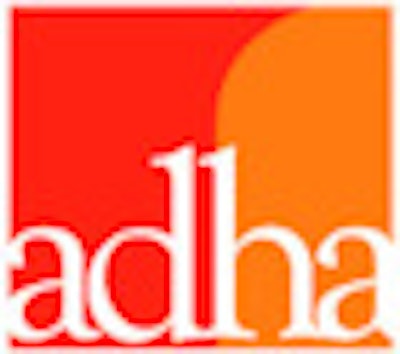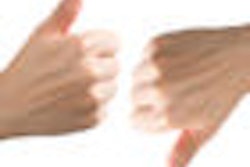
The role of the dental hygienist has changed dramatically over the last 40 years, a trend that is likely to continue -- if not accelerate -- given many of the issues facing the U.S. healthcare system these days.
Caryn Loftis-Solie, R.D.H., the newest president of the American Dental Hygienists' Association (ADHA), welcomes the challenge.
"I'd like to see us really become more of the recognized voice of dental hygiene, and to have that recognized by dental hygienists and other organizations and entities within dentistry," she said in an interview with DrBicuspid.com.
Hot topics
Loftis-Solie was installed as president of the ADHA on June 29 during the association's annual convention in Las Vegas, after having served a year as president-elect. Her predecessor, Lynn Ramer, R.D.H., is now chair of the ADHA Institute for Oral Health, a position Loftis-Solie will assume a year from now.
 Caryn Loftis-Solie, R.D.H.
Caryn Loftis-Solie, R.D.H.In the meantime, Loftis-Solie will continue working -- albeit part time -- at the Sparks, NV, practice where she has been employed for much of the past two decades. Her decision to cut back on her work hours reflects her understanding that the ADHA has a lot of ground to cover over the next 12 months.
One of the most pressing topics for many ADHA members is the economy, Loftis-Solie noted.
"We're hearing anecdotally from many hygienists who are seeing a reduction in their hours or even being let go because the doctor says, 'I'll do it myself -- I'm not that busy either,' " she said. "How do we facilitate keeping hygienists well-employed and getting that service to the patients?"
Another big issue is how healthcare reform is going to shake out. While the reform bill is creating a lot of opportunities that might involve hygienists -- such as the new workforce models and new community service programs -- change can be a slow, tedious process when each state is regulated differently, Loftis-Solie noted.
"Each state has a different scope of what hygienists can do," she said. "A few years ago I couldn't go to Arizona and deliver anesthetics but I could in Nevada. So while healthcare reform is going to create new paradigms in our delivery system, it also makes us more aware of the roadblocks we already have."
Midlevel providers
But over the next year the highest-profile issue before the ADHA and other dental organizations is likely to be the workforce model -- aka, midlevel providers. Since 2004, the ADHA has been promoting its proposed advanced dental hygiene practitioner (ADHP) model: an oral healthcare provider with a master's degree who works independently and is trained to administer the full range of services offered by dental hygienists, plus minimally invasive restorative services and extractions in emergent situations, as well as write some prescriptions.
"We created a policy and had a specific task force of educators that spent well over a year, maybe 18 months, developing educational curriculum and competencies," Loftis-Solie said. "So this is our brainchild, and as such we want to see it be the one that thrives and grows. But we recognize that there are some additional models that may have real value, and I think we are going to see a tremendous amount of movement and progress on this over the next two years."
— Caryn Loftis-Solie, R.D.H.
Regardless of which model each state eventually adopts, the ADHA is adamant that the person be educated, licensed, and able to provide direct care, she added.
"Our position right now is any new model, whatever the title is, should be able to provide hands-on care, versus a community health person that is facilitating getting [patients] from point A to point B," she said. "We feel that if they are going to put money into the education, they should be able to provide direct service."
And these individuals -- as well as hygienists -- should be able to do this without the need for direct supervision by a dentist, she added -- especially with the access-to-care challenges many U.S. communities face.
"Our position is the hygienist should be able to provide services without supervision," Loftis-Solie said. "With fewer dentists in the workforce and greater need, why should hygienists [or ADHPs] have to be babysitting the provider? They should be educated, licensed, and capable of providing levels of care on their own. And then you are making the entire workforce more productive."
Positive changes
These kinds of "paradigm shifts" are not new to Loftis-Solie, who has adapted to many changes in her 39 years as a hygienist, from the influx of new technologies and methodologies to cultural shifts that influence patients' health in increasingly challenging ways.
"Thirty-five years ago we didn't wear personal protective gear or gloves, and only wore a mask when we had a cold," she said. "You were aware of looking at everything in the patient's mouth, but you didn't do as much critical thinking. Rather, you just pointed things out to the doctor and waited for his recommendations. But now we're doing a lot more things. Our role has become much more of a prevention specialist, and I find a lot more patients now ask for my recommendations."
Technology has played a critical role in enabling many of these changes, she added. For example, the office she works in went totally paperless six years ago -- the first dental office in northern Nevada to be 100% digital, she noted.
"In my opinion, digital radiography is the finest thing we have," Loftis-Solie said.
In addition, ergonomic advances have added 10 years to her practice. And the Internet not only keeps her and her colleagues better informed and connected, it enables practitioners to deliver care in remote communities and helps patients participate more fully in their treatment.
"The technology has changed and improved, patient comfort has dramatically changed, and patients' dental IQ has really expanded," Loftis-Solie said. "People are much more aware of their health and what is going on inside their mouths, so they are much more engaged when you talk with them about their care."
And yet, through it all, some things in dentistry never change, she noted.
"No one person does it all," Loftis-Solie said. "What we do is always a team effort."
And what legacy does she hope to leave behind when she steps down from the ADHA presidency next June?
"This has always been my thought, whether camping or anything else: Leave it better than what it was when I got there," she said. "I would really like to know that dental hygienists are well-respected, able to utilize all of their abilities to their fullest, and that I helped a small part of that in some way."
Copyright © 2010 DrBicuspid.com



















